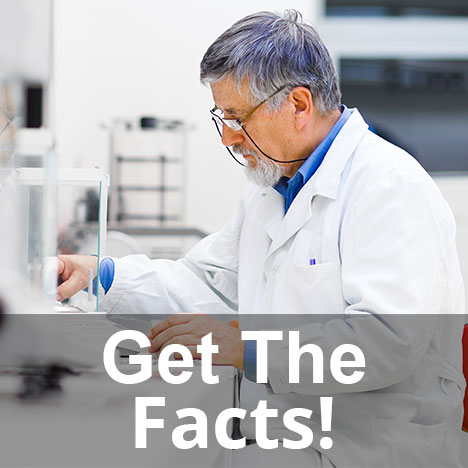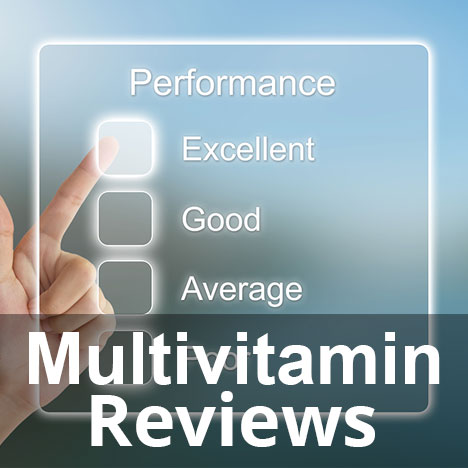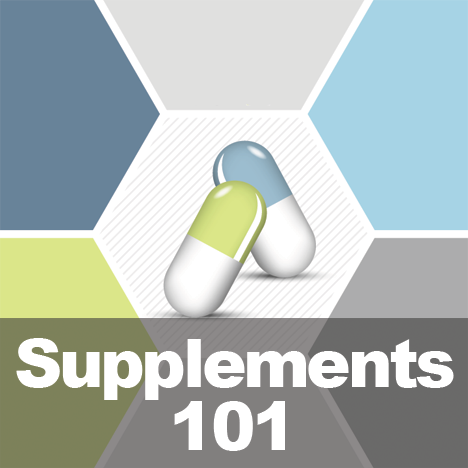 For approximately seven thousand years, Asia has regarded the Reishi Mushroom, with its glossy red, firm flesh and disc-like shape, as the “mushroom of immortality”. Dried and used in ancient medicinal tea preparations, the Reishi Mushroom was attributed with profound health benefits that not only improved quality of life, but also, according to ancient lore, extend it as well. In 1596, a Chinese medical text named Bencao Gangmu described the Reishi, or Lingzhi mushroom as, “positively affecting the life-energy, or Qi of the heart, repairing the chest area and benefiting those with a knotted and tight chest. Taken over a long period of time, agility of the body will not cease, and the years are lengthened to those of the Immortal Fairies”.
For approximately seven thousand years, Asia has regarded the Reishi Mushroom, with its glossy red, firm flesh and disc-like shape, as the “mushroom of immortality”. Dried and used in ancient medicinal tea preparations, the Reishi Mushroom was attributed with profound health benefits that not only improved quality of life, but also, according to ancient lore, extend it as well. In 1596, a Chinese medical text named Bencao Gangmu described the Reishi, or Lingzhi mushroom as, “positively affecting the life-energy, or Qi of the heart, repairing the chest area and benefiting those with a knotted and tight chest. Taken over a long period of time, agility of the body will not cease, and the years are lengthened to those of the Immortal Fairies”.
Immortality of Fairies. Wow. That is one heck of a selling point! But, is there any truth in this in regards to our modern world and current health concerns? Should we all be taking Reishi mushroom supplement and getting ready to party into the next century with Tinkerbell? Well, despite the allure of immortality, we can safely say that no supplement can provide a ticket to living for eternity. But in truth, who would really want to?
All notions of immortality aside, modern clinical research has revealed a clear link between the Reishi Mushroom and compelling evidence that it profoundly supports the human immune system, and thereby promotes a healthier, *perhaps* longer life.
Reishi Mushroom Supplement 101
Like all natural products, there are variations between strains and species of Ganoderma – the family of fungi which includes the varieties most commonly known as “Reishi”. But for a lay-person, it would be difficult to pick the medicinal variations out of a lineup. The two most traditionally used for medicinal purposes are Ganoderma lucidum and Ganoderma sinensis. Both species grow almost exclusively on hardwood trees in mountainous forests throughout Asia where they a wild-harvested. The specific type of tree which the mushroom grows on does have a huge impact on the chemistry of the Reishi, and there are three primary approaches that herbalists use in order to harvest or cultivate medicinal Reishi strains:
Wild harvesting from Duanmu, or “authentic or preferred wood” Trees
This form is highly regarded, given the more strong presence of the “Three Treasures” known as Jing, Qi and Shen. These treasures deal with the mushroom’s genetic resiliency, adaptive vitality, and the power derived from their tree/forest home and environment. But given the vast inconsistency of potency between each mushroom when attempting to collect a large amount in this manner, there is no guarantee as a mainstream consumer, that you will be getting a consistent quality of potency from bottle to bottle. Our research has found that Dragon Herbs is a highly respected company, offering a super potent Shen blend best-priced at iHerb. This method remains ideal for when working directly with a master chinese herbalist who has a personal relationship with a master forager.
Cultivation from Duanmu Logs
This method is preferable when it comes to creating a dependable and consistent Duanwood Reishi mushroom supplement, such as this one by Dragon Herbs, best-priced at iHerb. The only drawback of this method – albeit minor, is that is does tend to lack in some of the potency of the “Three Treasures”, in particular Qi, given that the farms are protected and the mushrooms themselves are not forced to adapt and struggle as much as they would in the wild. But the top cultivators pay particular care to which trees they source their logs from, the purity of their water source and the surrounding forest. Over 300 hospitals in China source their Reishi cancer therapy drug from such a cultivator.
The Poly Bag Method
This is most likely the method that many of the commercially available Reishi mushroom supplements in the western hemisphere are derived from, and arguably the least potent of the “Three Treasures”. This method relies on bags of sawdust or rice hulls which are inoculated and then develop mycelium. Mycelium are the precursor to mature fruiting bodies, which look like what most people recognize as a “mushroom shape”. When using this method, the food source in the bag usually depletes before the mushrooms fully mature into fruiting or spore producing fruiting bodies. The mycelium are then ground up and used in mass produced supplements.
Techniques in how to extract and utilize the powerful immunological benefits of medicinal Reishi also vary.
One such technique is via the spores produced by the fruiting bodies of the Reishi mushroom. The spores, much like plant seeds, contain an exponentially high amount of beneficial components locked in a concentrated state. A portion of these beneficial components are categorized as triterpenes, and referred to as glycosides (saponins), which are the actives linked with Reishi mushroom’s cancer fighting and longevity properties. In order to access these actives and allow the body the ability to absorb and utilize them, the spores must be “cracked”. Cracked Reishi mushroom supplement spores are highly coveted in Asian medical circles, and people are willing to pay a high price for them. Cracked Reishi mushroom spores are also used in order to derive a Reishi Spore Oil. In theory, this would be an ideal supplement, however, it is extremely expensive and difficult to process, and unless procured from an extremely reliable source, such as this highly potent oil by Dragon Herbs customers could run into the same issues that plague many supplements- irregular quality. Any benefits would be null and void if the Fatty Acids became oxidized, given the volatility of fatty acids to go rancid.
Hot water Extraction is the oldest and most commonly used method to extract medicinal Reishi mushroom supplement. Slices of dried mushroom are steeped in hot water and made into a Reishi Tea, which is then consumed on a daily basis. A mild, affordable, and beneficial tonic, hot water extraction does not present the same “gamble” that the spore oil extraction presents, but it also is not the most efficient way to consume the beneficial components of the Reishi because the large polysaccharide molecular chain break down with prolonged exposure to heat. A high quality Reishi mushroom tea such as this one offered by Health King, makes for an excellent daily preventive tonic.
Pressurized Hot Water extraction is another frequently used commercial method. And while hot water extraction in a “pessure cooker” environment does withdraw a higher amount of bioactive polysaccharides, the precious fat soluble triterpenes are still inaccessible using this method.
Two-Step Dual Extraction usually entails using a high quality dried reishi and a hot water extraction followed by an alcohol extraction, such as utilized for this Duanwood Reishi extra by Dragon Herbs. An alcohol extraction followed by a hot water extraction can also be applied.
For a DIY method, try using a juicer as shown in this video:
A Three Step Dual Extraction process is the most reliably efficient and productive, given its ability to effectively extract and make a larger, bioactive amount of both of the two most important families of beneficial medicinal actives in Reishi Mushrooms, which are Polysaccharides ( which include beta-glucans) and Triterpenes (which include ganoderic acids). The three-step process, which this outstanding Reishi Extract utilizes, entails first an ethanol extraction, then a pressurized hot water extraction, and then an alcohol and water precipitation extraction followed by a spray freeze drying to ensure the delicate fatty acids are not oxidized. Given the additional steps, these do tend to be a higher priced product, but not nearly as much so as the Reishi Spore or Spore Oil Products.
Many commercially manufactured Reishi mushroom supplements sold in the mainstream markets are not even extracted, but rather, are simply the mycelia ground into a powder and put into capsules. This is a profound waste of money, given that the beneficial actives in the Reishi mushroom are not readily available to be absorbed by the human body at such a large molecular weight. Such supplements are relying on the excellent reputation and history Reishi has in immunomodulation, but are nothing more then a step away from being a highly priced placebo.
The Takeaway: Always be sure to examine the extraction process used for the product you are purchasing the more information they disclose the better.
AHCC
An area that has received a great deal of clinical attention is the use of low molecular weight acetylated alpha-glucan, otherwise known as AHCC, or Active Hexose Correlated Compound, and is created via cell culturing of Reishi mushroom spore cells. Most cultured Reishi products result in mushroom polysaccharides, which are 500,000 Daltons in size and far too large to be absorbed by the body, hence making these mass-produced Reishi products less effective and beneficial. In contrast, AHCC production hinges on the addition of enzymes that are found within the mushroom’s cells and activate a fermentation process which breaks down the Polysaccharides into 5,000 Dalton molecular weight. This transformation allows the acetylated alpha glucans, which are the polysaccharides most clinically traced to an increase in NK cells, or natural killer cell activity, inherently improve the body’s natural immune response to infected or aberrant cells.
Over 20 clinical trials on human subjects have been conducted spanning over 1,000 medical institutions across the globe. AHCC has been clinically linked to contributing to patient improvement in regard to the following areas of concern: Cancer, side effects from chemotherapy, liver ailments, diabetes, cardiovascular disease, stress, and inflammation. With its primary function being an immunomodulatory, AHCC is adept at being able to offer support over a wide range of conditions.
Our immune system is a pillar in our health and longevity. The more likely that our body can pinpoint threats early on and eradicate them or adapt accordingly, the more likely we will be able to thrive and achieve increased longevity. There are two primary modes with our immune system that addresses issues:
Innate
This mode utilizes Cytokines, which are chemical messengers that are able to relate to the immune system when there is a problem that needs to be addressed, and then help coordinate a response. Next are (NK) cells or Natural Killer Cells, which are a type of white blood cell that hone in on infected or abnormal cells and inject them with cytotoxic granules that contain a number of proteins, including a pore-forming protein termed perforin, and a collection of serine proteases labeled as granzymes. These granules full of Perforin and Granzymes work in synergy to cause the infected or abnormal cells to to break apart, dissolve and die. Then we have Mycrophages which are another type of white blood cell that is responsible for cleaning up (via ingestion) cellular debris and harmful bacteria. And last in our innate line of immune defenses are Dendritic Cells, which “raise a red flag” for the B and T Cells and begin the process of the second immuno-adaptive response.
Adaptive
This response utilizes B Cells and T Cells in order to tailor a specific response to a harmful entity that the cells have encountered in the past, having registered specific weaknesses they will need to target in order to eradicate them.
Impressively, AHCC has been observed during its clinical trials to increase the body number of cytokines and dendritic cells, which are both vital chemical messengers, while doubling the number of macrophages. Additionally, the number of T cells increased by up to 200% and the NK cells increased between 300-800%.
Studies have also revealed that most over-the-counter drugs were observed to have no interactions with AHCC – along with prescribed medications such as antidepressants, insulin, anti-nausea, and the vast majority of chemotherapy medication. The chemo drugs that did raise a concern did so because these specific drugs, like AHCC, also metabolize via the cytochrome P450 D26 pathway. This could pose some type of interaction resulting in increased metabolic breakdown of such chemo drugs. Currently, the only mainline chemotherapy drugs that use cytochrome P450 D26 pathway are Doxorubicin and Tamoxifen.
Researches have studied the combination of AHCC treatment in conjunction with both of these respective drugs on mice and observed no adverse interactions. However, given that we are humans and not mice, it is best to err on the side of caution and to always confirm with your physician that none of the drugs you are taking are metabolized via the cytochrome P450 D26 pathway. Also be aware that being an immunomodulator, AHCC could have a counterbalancing effect on immunosuppressants such as azathioprine (Imuran), cyclosporine (Neoral, Sandimmune, SangCya), monoclonal antibodies, which include: basiliximab (Simulect), daclizumab (Zenapax), and muromonab (Orthoclone OKT3), and corticosteroids such as prednisone (Deltasone, Orasone), thereby possibly making these drugs less effective.
Dosage of AHCC
According to the AHCC Research Association, if you are looking to take AHCC as a preventative measure or to maintain good health, it is suggested that you dose yourself with one to three grams of AHCC daily. If you are seeking to supplement and support your cancer therapy treatments, it is recommended that you consume a three to six gram dose of AHCC daily. When you have completed your chemotherapy treatments, you may also continue to take AHCC at a dose of 3 grams daily in order to aid your recovery and support the re-balancing of your immune system. Keep in mind that if you are seeking to dose a child with AHCC, it is recommended to reduce the amounts above by up to 50 percent, given that children tend to have less body mass. The amount recommended for elderly patients has a great deal to do with the physical condition that the individual presently finds themselves in, given that most individuals can become more sensitive as they age. It is highly recommended that the determined dosage of AHCC be introduced gradually.
For all of the dosage amounts listed above, it is recommended that AHCC be divided into three even doses which are then administered three times daily. Regardless of your situation, it is stressed that you should always discuss new additions to your treatment plan with your physician. If you are healthy and are not taking any medications, taking 1 gram of AHCC daily as an immune system support tool should be of no risk given the extensive human trials that this compound has undergone. Just be sure that you are taking a product that has sourced their AHCC from Amino Up Chemical Co, Ltd, as they are the patent holder and only authorized manufacturer of AHCC. They make it in fine, soft granules, in capsules, and also in a liquid form.
Below are recommended AHCC supplements that have been sourced from Amino Up Chemical Company and carry the weight of the extensive human clinical research that has been conducted.
This article details Amino Up receiving their patent for Active Hexose Correlated Compound (AHCC) and subsequently, the supply chain of their AHCC, in order to be distributed in the US. In short, the raw ingredient importer that Amino Up has an exclusive relationship with is, Maypro Industries: “In the United States, Purchase, N.Y.-based Maypro Industries is the exclusive supplier of AHCC; it is distributed through Maypros Quality of Life Labs division”
It can be somewhat confusing to determine what may actually be the best investment when it comes to cost per dose, as well as how many doses you are getting, and so we have broken down the cost-per-unit for each different product below, intending to make it a bit easier to make the most educated decision:
As a price benchmark, let’s first take a look at what the retail arm for Maypro (Quality of Life) offers
A bottle of 60 capsules each including 500mg (1,000 mg equals a gram, which is the lowest daily dosing amount. Therefore, two capsules would serve as a daily supplement, lasting for 30 days).
1 GRAM = $2.50
For the very same product, iHerb provides considerable savings. passes some outstanding discounts to their customers. The same high quality product is listed at a 23% discount.
1 GRAM = $1.92
The following Reishi mushroom supplement formulations are also comparable:
Source Naturals AHCC 500 mg 60 capsules
1 GRAM = $2.11
Now Foods AHCC 500 mg 60 capsules
1 GRAM = $2.11
These formulations are in a powder form that must be self-measured, and can then be added to smoothies (One-quarter teaspoon equals a gram):
The NOW Foods brand of AHCC powder has packaged theirs as having a one-half teaspoon, 2 gram serving size. The cost per gram equivalent is below:
1 GRAM = $1.88
Source Naturals AHCC Powder
1 GRAM = $1.58
This formulation has their dosing broken into 1.5 gram increments, which could be a nice option for someone consistently taking 3 gram or 6 gram daily doses:
Now Foods Extra Strength AHCC Powder
1 GRAM = $2.00
In order to buy in even larger quantities, Pure Prescriptions offers a 180 capsule option that would be more sustainable for someone who desires to maintain a longterm therapy and/or prevention schedule.
1 GRAM = $1.46
In Conclusion
Whether it is in the form of a tea or a tonic, capsule or AHCC – Reishi Mushroom supplement has astounded physicians and researchers with its ability to support our immune system. And what is particularly fascinating is that Asian herbalists not only regard Reishi as an effective healer and immunological stabilizer, they also herald it as being effective in more ephemeral matters such as mood and outlook. They note that if given to a patient daily over a long duration, they notice a shift in not only the patient’s health but also their “ peace of mind, joy, emotional stability, optimism, sleep, and clarity of thought.” Whether or not such claims can be effectively studied as Reishi’s immunomodulating effects, having a side-effect like “peace of mind” and “optimism” is certainly an added bonus to a body that is more capable of effectively defending itself.




